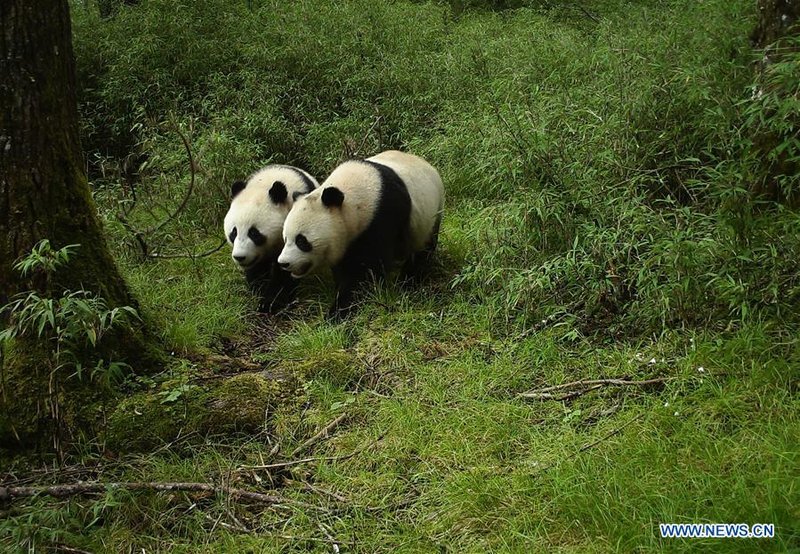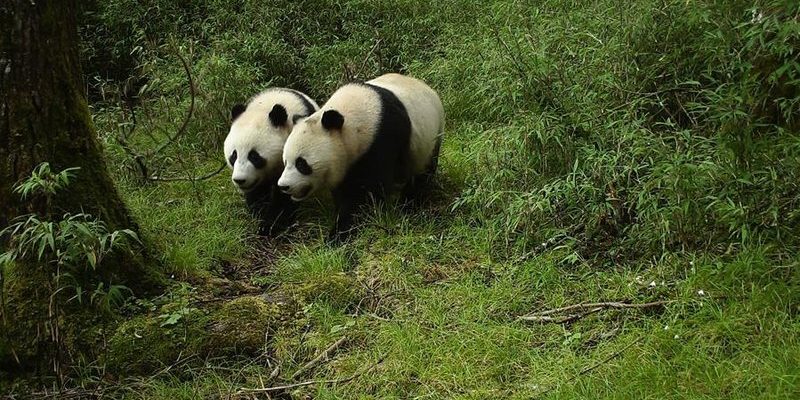
In nature, the bond between a mother and her young is crucial for survival. Giant pandas, being solitary animals, have their own set of rules when it comes to raising their young. The process is fascinating and filled with both beauty and struggle. Honestly, if you’ve ever wondered how these gentle giants manage to raise their cubs amidst the challenges of their environment, you’re in for a treat. Let’s dive into the remarkable journey of giant pandas as they navigate motherhood in the wild.
The Life Cycle of a Giant Panda
Before we explore how giant pandas raise their young, it’s essential to understand their life cycle. Giant pandas reach sexual maturity between the ages of 4 and 8 years. In the wild, the breeding season typically occurs between March and May. Females are only fertile for a short window—just 2 to 3 days each year. During this time, males will compete for the attention of potential mates. This mating ritual can be quite a spectacle!
Once successful, the female panda undergoes a pregnancy that lasts about 95 to 160 days. Interestingly, she can give birth to one to three cubs at a time, although it’s common for only one to survive. If she has twins, she usually picks the stronger cub to focus on, leaving the other to perish, a choice made in the interest of survival. This harsh reality highlights the challenges pandas face in the wild, shaping their parenting strategies.
Cub Development: From Birth to Independence
Newborn panda cubs are incredibly tiny, weighing only about 3 to 5 ounces (around the size of a cup of sugar). They are born blind, hairless, and utterly helpless. In the wild, they rely entirely on their mother for warmth and nutrition. The first few months are critical for their development. A mother panda will keep her cubs close, wrapping them in bamboo leaves to shield them from the elements and predators.
During the first few weeks, the cub’s primary focus is on nursing. A mother panda typically stays in a den with her cubs, which offers safety and security. Here’s the thing: she only leaves briefly to eat, drink, or relieve herself. This dedication ensures that her little ones get all the nutrients they need to grow strong. As they begin to grow, cubs will start to crawl and explore their surroundings. A mother panda gently guides them, teaching them about their environment and how to navigate the world.
Mother-Young Bonding
The bond between a mother panda and her cubs is both tender and vital for survival. As they grow, a mother panda will communicate with her cubs through various vocalizations and body language. You might be wondering how she teaches them the skills they need. Through play and exploration, she guides them in learning essential skills like climbing and foraging. This playful interaction not only helps the cubs develop physically but also strengthens their emotional connection.
Interestingly, pandas are known for being somewhat aloof. While they do exhibit nurturing behaviors, they’re also independent animals. This means that once the cubs reach about 18 months, it’s time for them to start venturing out on their own. The mother will begin to separate from them gradually, preparing the cubs for their solitary lives ahead. This transition is crucial, as it teaches the young pandas how to be independent and survive in the wild.
Feeding Habits: The Role of Bamboo
Giant pandas have a unique diet that primarily consists of bamboo. Did you know that bamboo makes up about 99% of their diet? While this may seem simple, it poses challenges for young cubs. The mother panda not only nurses her young but also has to find enough bamboo to sustain her and her growing cubs. It’s a daily task involving a lot of hard work.
As the cubs grow, they begin to learn how to eat bamboo themselves. Their mother will demonstrate how to find the best shoots and leaves. It might look effortless, but it requires skill. Cubs have to understand which parts of the bamboo are edible and how to process them. This is where that mother-young bond really shines—she’s not just feeding them; she’s teaching them vital survival skills.
Threats in the Wild
Giant pandas face numerous threats in the wild. Habitat loss, climate change, and dwindling bamboo supplies can all affect their survival. For young cubs, the challenges are even more significant. Predators like wolves or leopards may pose a danger, especially when the mother is away foraging. Thus, the protective role of the mother panda is paramount during these early stages of life.
Moreover, pandas are generally solitary animals. The lack of social structures means that mothers must be vigilant and protective, keeping their young safe from any potential threats. Unfortunately, the lower birth rates and high infant mortality rates of giant pandas emphasize the fragility of their existence in the wild. Conservation efforts are crucial to ensure that these magnificent animals continue to thrive.
Conservation and Future of Giant Pandas
Thanks to various conservation efforts, the future of giant pandas looks a bit brighter. Protected reserves and breeding programs have helped to stabilize populations. However, we cannot afford to become complacent. It’s essential to preserve their natural habitats and create sustainable environments for both the pandas and the local ecosystems.
As we learn more about these magnificent creatures, it becomes clear that every effort counts. Keeping bamboo forests intact and ensuring that giant pandas have safe spaces to live and raise their young is vital. You might feel inspired to support these efforts, whether through donations or spreading awareness about their plight. Every little bit helps!
Final Thoughts: The Heart of Motherhood in Pandas
In conclusion, the journey of how giant pandas raise their young in the wild is a testament to the beauty and complexity of nature. From the intimate bond between mothers and their cubs to the hurdles they face in a changing world, there’s so much to admire. Mother pandas are incredibly dedicated, making sacrifices to ensure their cubs’ survival and teaching them how to thrive in their environment.
So, next time you think about giant pandas, remember the incredible journey of motherhood that unfolds in their world. It’s not just about being cute and cuddly; it’s about survival, love, and the remarkable resilience of nature. Just like with everything else in life, raising young pandas is full of ups and downs, but it’s a journey worth honoring and preserving.

